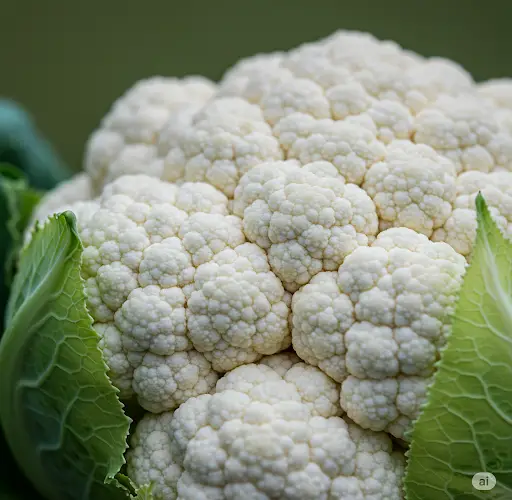Cauliflower is a cool-season crop prized for its compact white heads and nutritional value. While it’s considered slightly more challenging to grow than other brassicas like cabbage or broccoli, with the right care and timing, you can enjoy a successful harvest even as a beginner. Whether you’re planting in a backyard garden or a small farm plot, this step-by-step guide will help you cultivate healthy, flavorful cauliflower with confidence.
Understanding Cauliflower Basics
Cauliflower belongs to the brassica family and thrives in cooler temperatures. It needs consistent moisture, rich soil, and careful monitoring to form large, firm heads—known as “curds.” Fluctuations in temperature, nutrient imbalances, or stress can cause the heads to become discolored, loose, or fail to form at all.
Choosing the Right Variety
Start by selecting a cauliflower variety suited to your region and planting season. Varieties differ in color (white, orange, green, or purple), head size, and days to maturity.
-
Early varieties mature in about 60–70 days and are ideal for spring planting.
-
Late varieties take 80–100 days and are better suited to fall or overwintering in mild climates.
-
Self-blanching types have leaves that curl over the head naturally to shield it from the sun, reducing the risk of yellowing.
Preparing the Soil
Cauliflower demands fertile, well-draining soil with plenty of organic matter.
-
Soil pH: Ideal range is 6.0 to 7.0.
-
Enrich the soil: Add compost or aged manure before planting. A soil rich in nitrogen supports leafy growth early on.
-
Tillage: Loosen the soil to a depth of at least 12 inches to accommodate deep root development.
Starting Seeds or Transplants
You can grow cauliflower from seeds or transplants depending on your preference and climate.
-
Sow indoors: Start seeds indoors 6–8 weeks before your expected last frost date. Use seed trays or pots and keep them in a bright, warm spot.
-
Transplanting: Move seedlings outdoors when they are 4–6 weeks old and have at least four true leaves. Harden them off first by gradually exposing them to outdoor conditions.
-
Spacing: Plant seedlings 18–24 inches apart in rows spaced about 30 inches apart. Crowding can lead to smaller heads or no head formation at all.
Care and Maintenance
Cauliflower needs consistent conditions throughout its growing period. Here’s how to keep it healthy and productive:
-
Watering: Keep the soil evenly moist but not soggy. Cauliflower has shallow roots, so regular watering is essential—especially in dry spells.
-
Mulching: Apply mulch to retain soil moisture, regulate temperature, and suppress weeds.
-
Feeding: Apply a balanced fertilizer (such as 10-10-10) a couple of weeks after transplanting, then again when the head begins to form. Avoid excess nitrogen later in the season, which can promote leaf growth at the expense of the curd.
Blanching the Heads
If you’re growing white cauliflower, blanching helps keep the head white and tender by protecting it from sunlight.
-
When to blanch: Once the head is about 2–3 inches across.
-
How to do it: Gently tie the outer leaves over the head using twine or soft ties, or fold the leaves inward to cover it.
-
Self-blanching types: These may not need manual blanching, as their leaves naturally curl over the head.
Dealing with Pests and Diseases
Cauliflower is susceptible to many of the same pests as other brassicas. Here are the most common issues:
-
Aphids: These sap-sucking insects cluster under leaves. Use insecticidal soap or hose them off with water.
-
Cabbage worms and loopers: These green caterpillars chew through leaves. Remove by hand or treat with Bacillus thuringiensis (Bt).
-
Flea beetles: Small beetles that leave tiny holes. Use floating row covers early in the season for protection.
Diseases to watch for:
-
Clubroot: Causes swollen, distorted roots. Avoid by rotating crops and using disease-resistant varieties.
-
Downy mildew: Causes yellow patches on leaves. Improve air circulation and avoid overhead watering.
Crop rotation, clean gardening practices, and avoiding planting brassicas in the same spot year after year will help minimize disease pressure.
Harvesting Cauliflower
Cauliflower is ready to harvest when the head reaches a compact, firm size—usually about 6–8 inches across—depending on the variety. Don’t wait too long, or it may become grainy or start to separate.
-
How to harvest: Use a sharp knife to cut the stem, leaving a few leaves around the head for protection.
-
After harvesting: Store the head in the refrigerator. It can last up to a week when stored properly.
Final Tips for Success
-
Consistent care is key: Cauliflower is sensitive to stress. Irregular watering, heat spikes, or nutrient imbalances can all affect head formation.
-
Time your planting carefully: Cauliflower prefers cooler weather, so aim to harvest before summer heat or after fall’s first frost.
-
Companion planting: Growing cauliflower near herbs like dill or onions may help deter pests naturally.
With a bit of attention and timely maintenance, cauliflower can become one of the standout vegetables in your garden. Its adaptability and impressive nutritional value make it well worth the effort.



